Seize the day this spring to witness a bizarre alchemy in action. The metamorphosis of frogspawn into tadpoles and, eventually, froglets offers a unique window into amphibian development – from ovum to embryo, larva and adult. ‘Window’ is an apt word: the transparent spawn renders the process visible start to finish.
Overview of common frog tadpole development:
- 0-4 weeks: Baby tadpole has a long, keeled tail and visible gills. Eats spawn’s last yolk; at 10 days starts grazing algae.
- 6-8 weeks: Speckles appear. External gills lost as internal gills – later replaced by lungs – start to develop.
- 8-12 weeks: Back legs sprout – first the ‘knees’, then double-jointed limbs.
- 12-16 weeks: Front legs complete; tail lost. Metamorphosis to carnivorous, air-breathing froglet is complete.
It is not illegal to collect and raise frogspawn belong to the common frog (Rana tempororia), or toadspawn from the common toad (Bufo bufo) in captivity in the UK. There are a few other frog, toad and newt species in the UK, so make sure you're collecting the right spawn. You should return the froglets to where you found them, as moving frogs (or toads) between different ponds increases the risk of spreading disease and viruses, and invasive non-native plants and invertebrates.
It is illegal to sell the wild-caught spawn and tadpoles of amphibians under the The Wildlife and Countryside Act 1981.
If you are outside the UK, you should check your local laws about keeping amphibians in captivity.
Find out more about frogs and toads:
How do common frogs reproduce?
Common frogs spend the winter hidden away and hibernating, and then emerge in early spring (this can be very early in the south of the UK) to head to a pond to breed.
Frogs can breed from between the ages of two and three years old, and usually return to the pond in which they were spawned. Males need to attract the females to them, and do so by croaking. If successful, males then grasp onto the backs of the females, holding under her forelegs until she lays her eggs, which he then fertilises. The rafts of spawn can be immense – up to 2000 eggs!
Please note external videos may contain ads:
Common Frogs Mating Underwater. © Jack Perks Wildlife Media
How to raise froglets from frogspawn
1
Prepare the tank
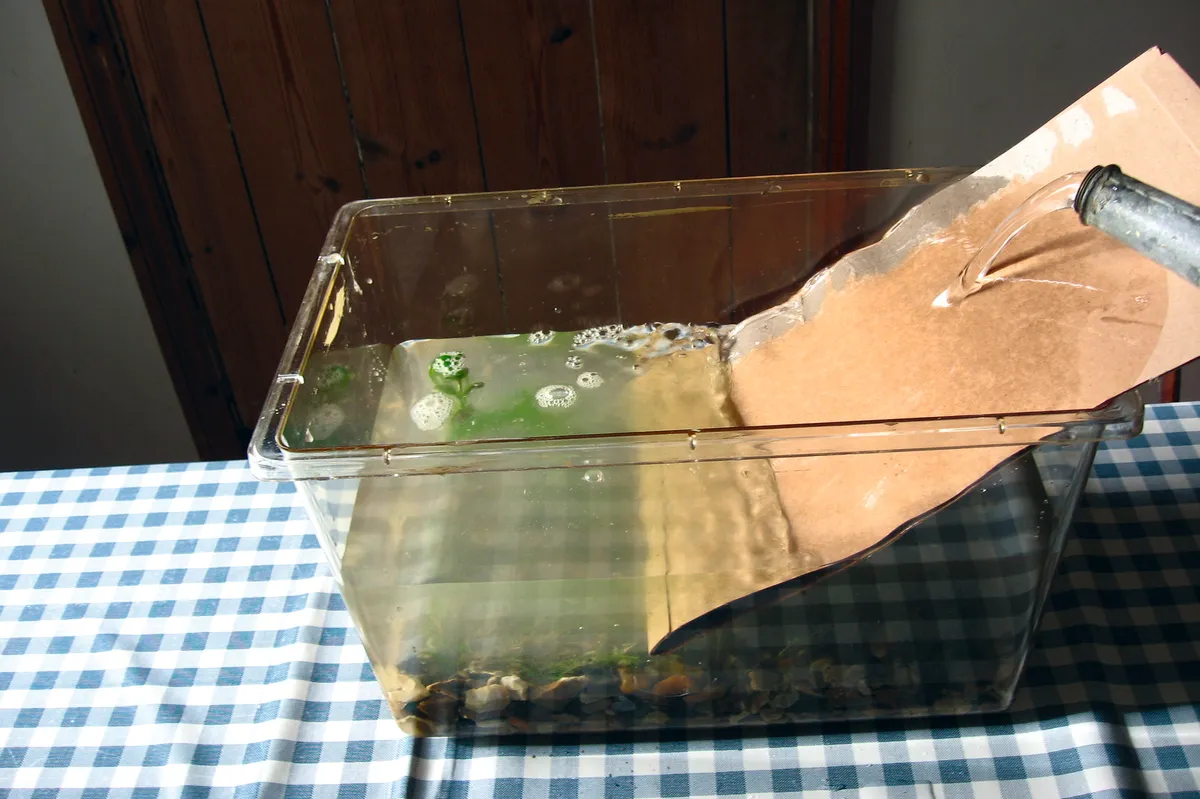
Use a nine-litre plastic tank with a lid, and put washed gravel in the bottom.
Pour water in slowly, over a piece of rock or cardboard. Do not use tap water, because chlorine is toxic to tadpoles. Use rainwater from a water butt or pond water. Tuck some pondweed into the gravel to oxygenate the water.
2
Collect the spawn

Frogs usually spawn in February or March. Look out for floating clumps of jelly-like spawn in local ponds. Use a net to collect a small amount.
Don’t take too much – you should aim to have three to five tadpoles per litre of water. Gently pull some off by hand if your clump is too big.
Do not take spawn from multiple locations and mix it, as this could spread fungal infections and non-native plants.
3
Float the spawn
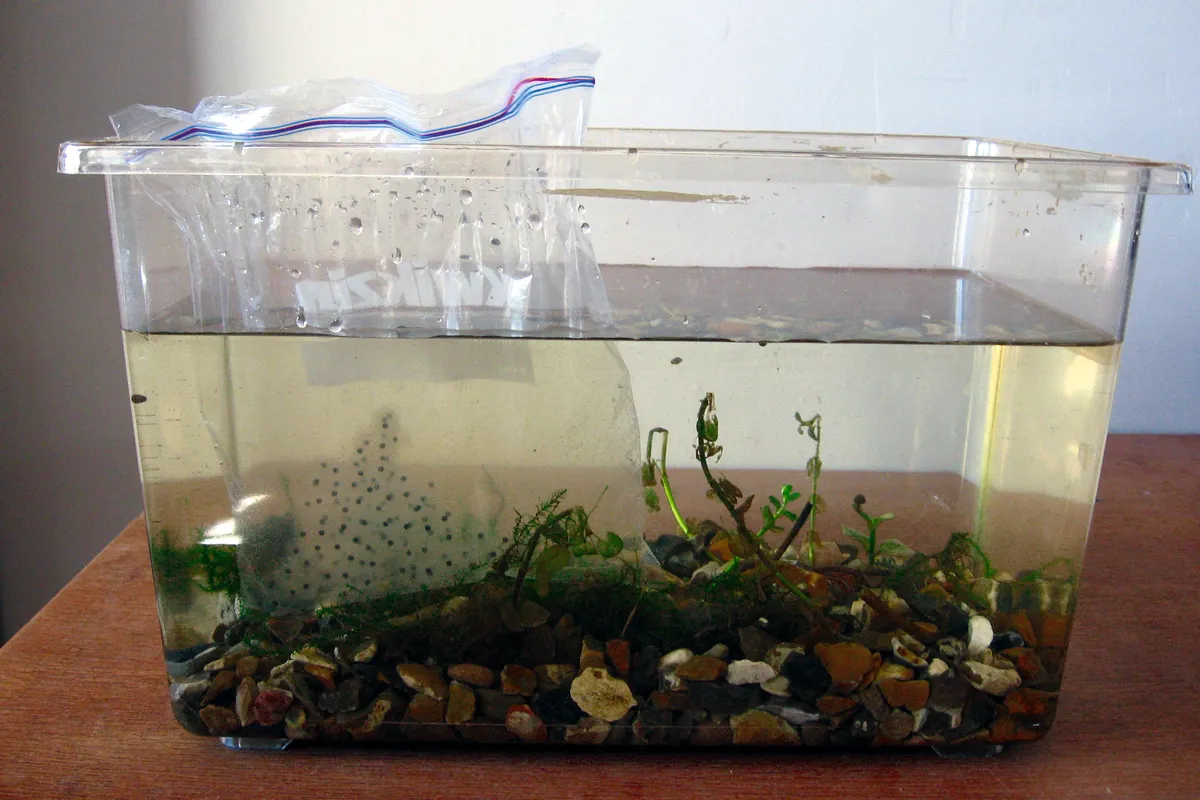
Take the spawn home in a plastic bag of pond water and float the whole thing in your tank.
The tank water will be warmer than the pond and the eggs need to acclimatise gradually. They do not like sudden temperature changes. Keep the tank in a light place but out of direct sunlight.
4
Watch the young hatching
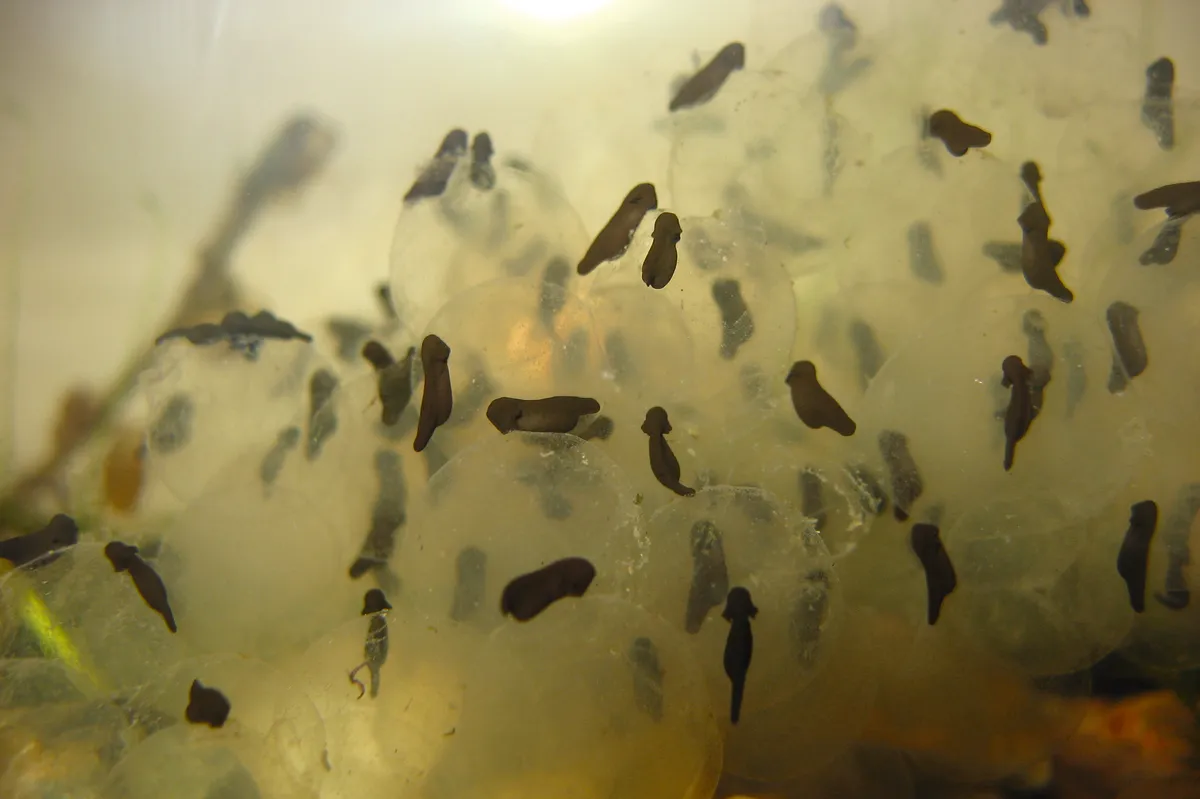
After a few hours, tip the spawn out of the bag and into the tank. In this warmer environment, the black dots will quickly turn into commas as the tadpoles hatch.
At first, they have feathery external gills and stay quite still. Once they start swimming, remove the jelly and any undeveloped eggs.
5
Observe the young tadpoles
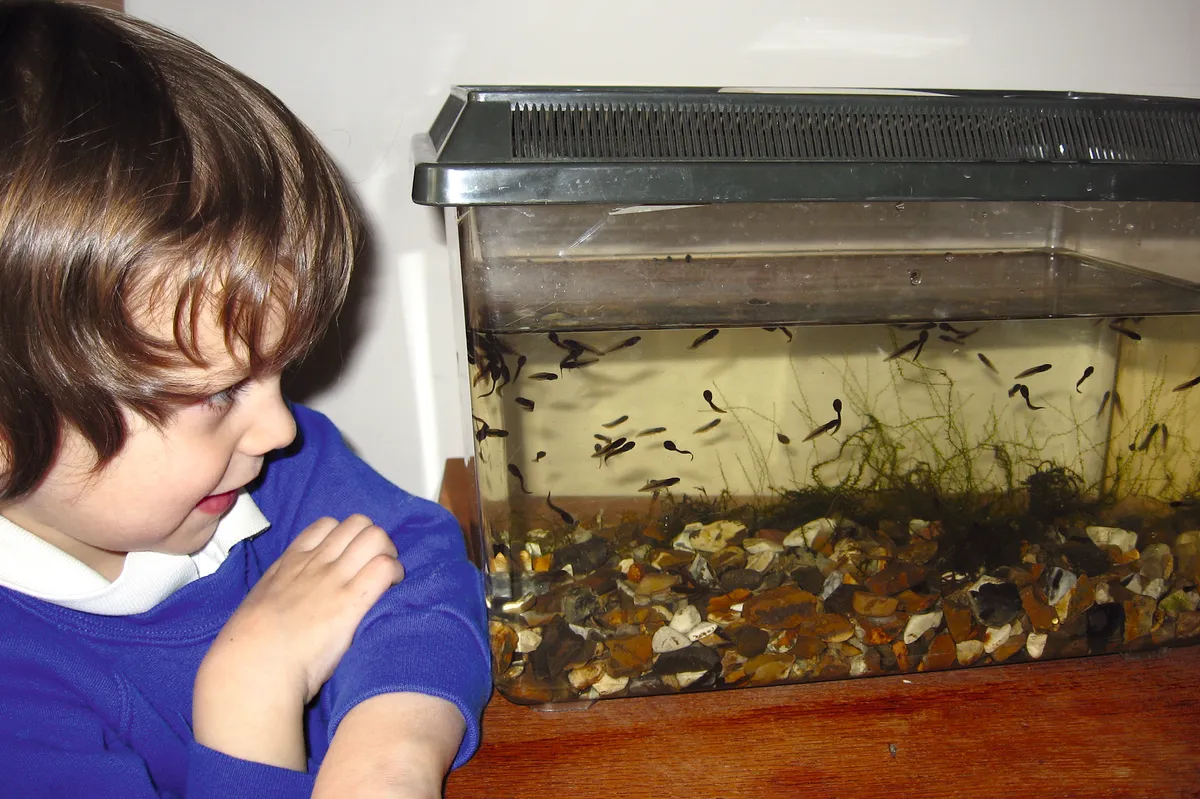
The youngsters will graze on algae on the tank and stones. After a couple of weeks, you can give them two or three rabbit pellets or a lettuce leaf (boiled for five minutes and cooled).
Feed every three or four days, waiting until all the food is consumed, otherwise it will make the water cloudy.
6
Replace the water regularly
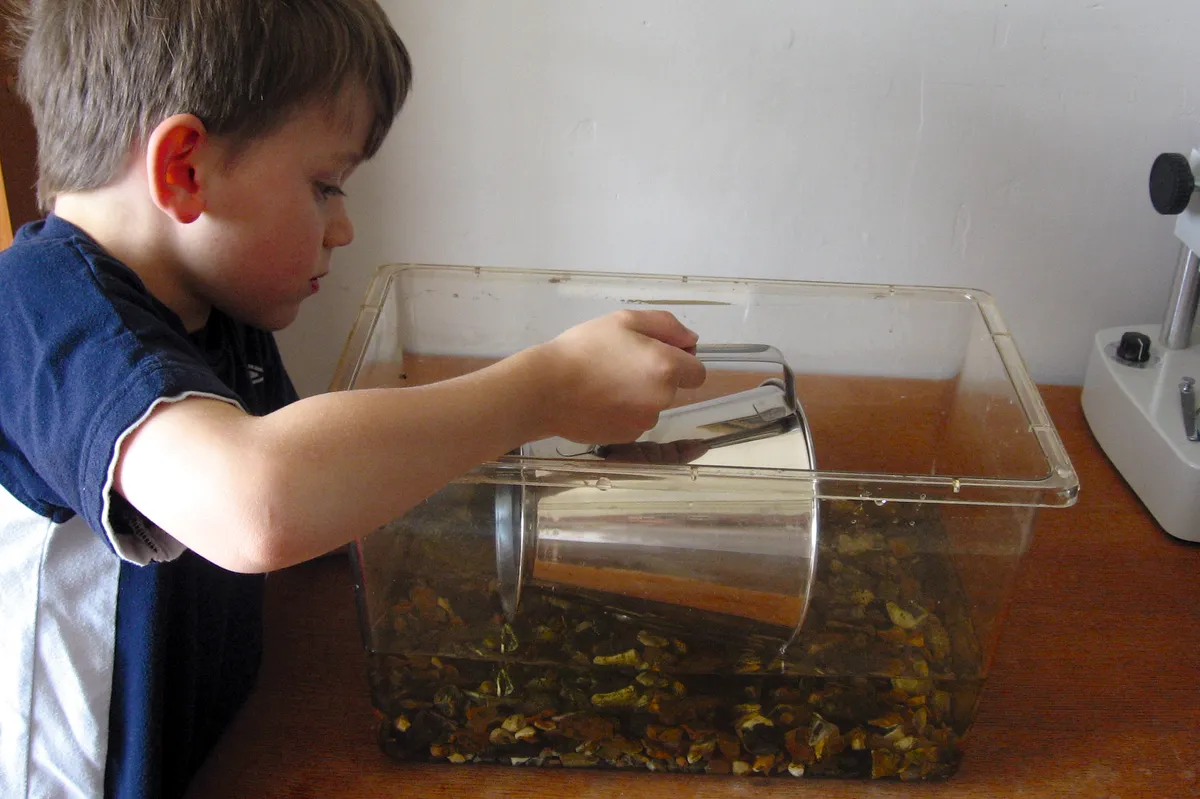
Change the water every week. Keep a bucket of fresh water – not tap water, remember – indoors for a few hours beforehand to get the temperature right.
Remove half to three quarters of the water in the tank with a jug, fishing out any escaped tadpoles, then slowly add the fresh water.
7
Note the changes

After two months, the tadpoles will be bigger and speckled. When their back legs appear, they become carnivorous. Feed them flakes of fish food or live water fleas from a pet shop.
If you’re using pond water, it may contain small pond creatures – remove predators such as dragonfly and beetle nymphs.
8
You have froglets!

Soon, the tadpoles will grow front legs and turn into tiny frogs. Lower the water level and provide a stony beach for them to sit on or they’ll drown because they need to breathe air. When they’re ready to disperse, they’ll climb the walls at night.
Release them in damp grass by their native pond, rather than directly into the water.
Main image: Common frog and frogspawn. © Iain Lawrie/Getty